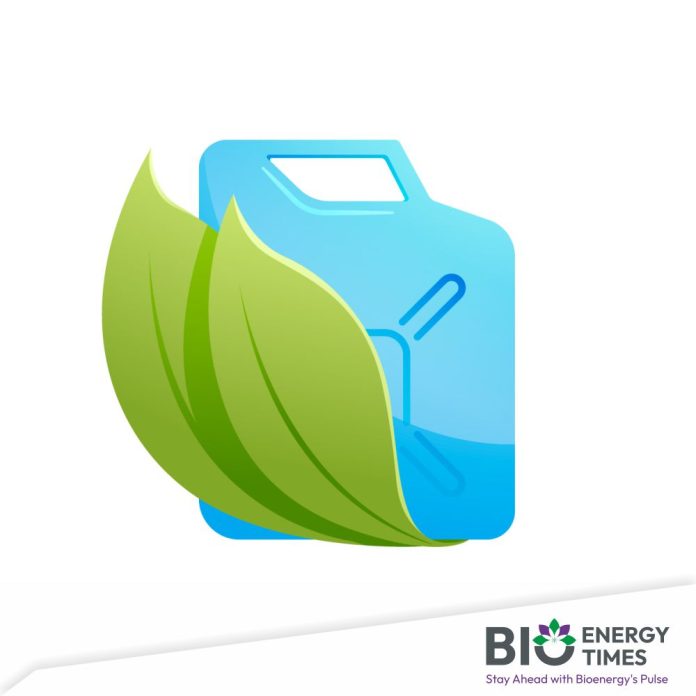Scientists develop simplified method to produce biodiesel from waste oil

Researchers at UC Santa Cruz have developed a more efficient biodiesel production method using sodium tetramethoxyborate (NaB(OMe)4) to convert waste oil into biodiesel. This low-energy process requires only 40°C, completing biodiesel separation in under an hour. Offering a carbon-neutral fuel alternative, it avoids high-cost palm oil and reduces energy use compared to traditional methods. With 85% yield, this approach is suited for heavy machinery and could be used on-site, even on farms, without extensive infrastructure.
Researchers at UC Santa Cruz have developed a novel method for producing biodiesel from waste oil, offering a simpler process that requires relatively low heat. This breakthrough could make biodiesel a more viable alternative fuel for the industrial sectors that are central to the U.S. economy, reported ucsc.edu.
In 2022, the U.S. transportation sector consumed about 3 million barrels of diesel per day, representing 75% of the country’s total diesel consumption. Diesel use also accounted for approximately 10% of the U.S.’s energy-related CO2 emissions that year, according to the Energy Information Administration.
While electric vehicles are being adopted to help reduce carbon emissions, most commercial fleets still rely on diesel, partly because producing biodiesel has been a complex, energy-intensive process that has slowed its widespread use. In fact, biofuels made up only 6% of the U.S. transportation sector’s energy use in 2022.
In their recent study, published on October 3 in the American Chemical Society journal Energy & Fuels, lead author Kevin Lofgren and his team describe a new method for converting used vegetable oil into biodiesel using sodium tetramethoxyborate (NaB(OMe)4). This chemical simplifies the separation of biodiesel from its byproducts—allowing the biofuel to be easily poured off, which makes the process more efficient.
The approach also has the advantage of enabling the regeneration of the most expensive catalyst used in biodiesel production. Another key benefit is that the process can be completed in under an hour, at temperatures as low as 40°C (104°F), significantly reducing energy consumption and costs.
“I always wanted to work on biodiesel,” said Lofgren, a Ph.D. student in chemistry at UC Santa Cruz. “I started exploring this new material we developed to see if it could catalyze biodiesel production, and it all flowed from there.”
While many individual consumers are turning to solar and electric power, the U.S.’s large industrial sectors remain heavily dependent on diesel. Lofgren highlighted that the majority of trucks, trains, and ships that transport goods globally still rely on diesel engines, and these will not be electrified in the near future.
Biodiesel, however, is a carbon-neutral fuel that can be used today without requiring modifications to existing diesel engines. This makes it a promising option for industries seeking to reduce their carbon footprint.
### A More Energy-Efficient Process
Traditional methods of biodiesel production often result in soap as a byproduct, complicating the purification process and reducing the yield of usable biodiesel. Additionally, some methods rely on palm oil, contributing to deforestation in rainforests for palm tree plantations. These processes are also energy-intensive, requiring extremely high temperatures and pressures. In contrast, the method developed by the UC Santa Cruz team produces biodiesel at a temperature lower than that required to boil water.
“To make energy, it takes a lot of energy,” said co-author Scott Oliver, a professor of chemistry and biochemistry. “Our method uses waste oil and mild heating, compared to current petroleum refineries, which are energy-hungry and polluting.”
The researchers found that their method converts about 85% of used vegetable oil into biodiesel, meeting almost all industry standards for use in heavy machinery and transportation. The only slight deviation was in the water content, which was a bit higher than industry standards, though the team expects this issue will be resolved when the process is scaled up.
“This method is special because it’s simple, affordable, and allows for regeneration of the starting material,” Lofgren explained. “It’s already low-cost enough to be competitive, but the ability to regenerate the most expensive ingredient makes it even more cost-effective in the long run.”
Professor Oliver added, “Everyone needs energy—whether it’s for farms, food production, or transportation. This process can be done at just above room temperature, and it’s reusable. You don’t need a large refinery; this could potentially be done on a farm.”
The study, titled *Borate Pathway to FAMEs at Near-Ambient Conditions from Used Oil*, was funded by an Innovation Catalyst Grant under the Climate Action Solutions Program. Bakthan Singaram, a professor of chemistry and biochemistry at UC Santa Cruz, is also a co-corresponding author on the paper.
Source Link : https://bioenergytimes.com/scientists-develop-simplified-method-to-produce-biodiesel-from-waste-oil/

















